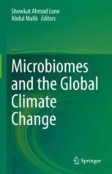Search
Search Results
-
A comparative study on chemical characterization and properties of surface active compounds from Gram-positive Bacillus and Gram-negative Ochrobactrum strains utilizing pure hydrocarbons and waste mineral lubricating oils
Mineral lubricating oils are widely used in various industrial sectors for their applications in maintenance and functioning of machineries. However,...

-
Bioremediation Technology: A Cumulative Study on Microbial Bioremediation of Heavy Metals, Aromatic Hydrocarbons, Acrylamide, and Polyacrylamide
Hydrocarbons, heavy metals, and xenobiotics represent the biggest cluster of environmental pollutants worldwide. Upon release into the environment,...
-
Microbial production and consumption of hydrocarbons in the global ocean
Seeps, spills and other oil pollution introduce hydrocarbons into the ocean. Marine cyanobacteria also produce hydrocarbons from fatty acids, but...

-
An Ozonolysis Based Method and Applications for the Non-Lethal Modification of Insect Cuticular Hydrocarbons
Cuticular hydrocarbons (CHCs) are important, multi-function components of the insect epicuticle. In Drosophila spp., CHCs provide protection from...

-
The diversity and function of the in-situ fungal communities in response to polycyclic aromatic hydrocarbons in the urban wetland
PAHs (polycyclic aromatic hydrocarbons) increases the potential harm to ecosystem and human health. The fungi is considered as a powerful choice for...

-
Microbes: A Novel Source of Bioremediation for Degradation of Hydrocarbons
In our daily life, the demand for liquid petroleum products is increasing day by day. Crude oil-derived hydrocarbons, the largest group of...
-
Biodegradation of Hydrophobic Polycyclic Aromatic Hydrocarbons
Polycyclic aromatic hydrocarbons (PAHs) are hydrophobic, toxic, and carcinogenic compounds which comprise of high molecular weight (HMW) and low...
-
Biosurfactant-Producing Bacteria as Potent Scavengers of Petroleum Hydrocarbons
Pollution with petroleum hydrocarbons is far-reaching and thus, a problem for the environment as well as human health. The pristine environment has...
-
Allicin Decreases Phytotxic Effects of Petroleum Hydrocarbons by Regulating Oxidative Defense and Detoxification of Cytotoxic Compounds in Wheat
Hydrocarbon stress is among significant environmental stresses limiting crop growth and production. Allicin is an organosulfur compound with the...

-
Anaerobic oxidation of petroleum hydrocarbons in enrichment cultures from sediments of the Gorevoy Utes natural oil seep under methanogenic and sulfate-reducing conditions
This article presents the first experimental data on the ability of microbial communities from sediments of the Gorevoy Utes natural oil seep to...

-
Cuticular hydrocarbons are associated with mating success and insecticide resistance in malaria vectors
Anopheles coluzzii females, important malaria vectors in Africa, mate only once in their lifetime. Mating occurs in aerial swarms with a high...

-
The Scent of Ant Brood: Caste Differences in Surface Hydrocarbons of Formica exsecta Pupae
Chemical communication is common across all organisms. Insects in particular use predominantly chemical stimuli in assessing their environment and...

-
Phytoremediation of Polycyclic Aromatic Hydrocarbons-Contaminated Soils
Polycyclic aromatic hydrocarbons (PAHs), one of the main organic pollutants, are produced mainly during the uncomplete organic material combustion...
-
A biosurfactant-producing yeast Rhodotorula sp.CC01 utilizing landfill leachate as nitrogen source and its broad degradation spectra of petroleum hydrocarbons
Biosurfactants (BSs) are known for their remarkable properties, however, their commercial applications are hampered partly by the high production...

-
Polycyclic Aromatic Hydrocarbons: Toxicity and Bioremediation Approaches
PAHs (Polycyclic Aromatic Hydrocarbons) constitute a particular class of organic compounds, which has been widely studied because of their genotoxic,...
-
Intraspecific variation of cuticular hydrocarbons in the eusocial wasp Polybia sericea (Hymenoptera: Vespidae)
Chemical communication is fundamental to maintain cohesion in social insect colonies, and in this communication process, cuticular hydrocarbons act...

-
Evaluation of in situ biosurfactant production by inoculum of P. putida and nutrient addition for the removal of polycyclic aromatic hydrocarbons from aged oil-polluted soil
This work aimed to conduct a laboratory study to evaluate the use of Pseudomonas putida CB-100 and nutrient addition for the removal of PAHs from an...

-
Identifying bioaugmentation candidates for bioremediation of polycyclic aromatic hydrocarbons in contaminated estuarine sediment of the Elizabeth River, VA, USA
AbstractEstuarine sediments near former creosoting facilities along the Elizabeth River (Virginia, USA) are contaminated by polycyclic aromatic...

-
Fungal bioremediation of soil co-contaminated with petroleum hydrocarbons and toxic metals
AbstractMuch research has been carried out on the bacterial bioremediation of soil contaminated with petroleum hydrocarbons and toxic metals but much...

-
Biogenesis of Hydrocarbons
The book covers the microbiological, environmental and biotechnological aspects of alkane production. Alkanes are important energy-rich compounds on...
